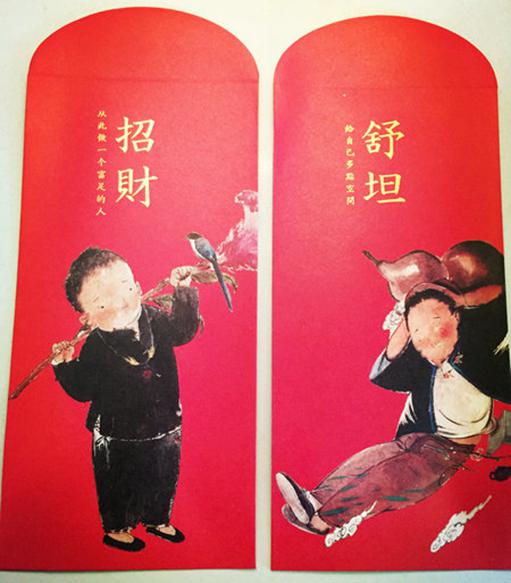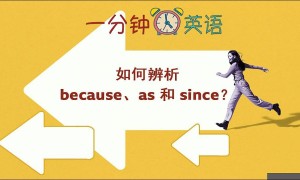导读:春节将近,又到了发红包的时候。你知道红包缘何而来,又如何演变的吗?

Recently, I checked how many WeChat red packets I got in 2016, which contains about 10,000 yuan ($1455), most from my family and friends.
最近,我查看了一下,2016年我获得了多少微信红包,里面有大约一万元(1455美元),绝大多数来自我的家人和朋友。
As Chinese Lunar New Year draws near, a busy yet happy period of "grabbing red packets" on smart phones is coming too.
随着中国农历新年临近,忙碌而快乐的智能手机“抢红包大战”也正在到来。
The 2015 Spring Festival marked the coming of digital red packets on WeChat. During that Lunar New Year, for the first time, many Chinese people started to use red packets on their WeChat to express their best New Year wishes to others.
2015年春节时,微信迎来了数字红包。去年春节期间,很多中国人首次开始使用微信红包向他人表达自己的最美好的新年祝愿。
And "grabbing red packets" also became an extremely popular game on WeChat.
“抢红包”也成为了微信上一个相当流行的游戏。
As people establish a series of groups among their contacts on WeChat, during special festivals, such as Lunar New Year, someone will distribute a certain numbers of red packets in a group, and other members will try their best to grab one red packet. Often other members will follow and go on distributing more red packets.
随着人们在春节这样特殊的节日里建立起一系列群聊,一些人会在群聊里发一定数量的红包,其他成员倾其所能抢一个红包。通常情况下,其它成员会紧随其后继续发放更多红包。
The money in each packet is random, from 0.01 yuan ($0.001) to less than 200 yuan ($29). Thus the amount of money one can grab largely depends on his or her luck, which is just the very fun of "grabbing red packets".
每个红包的价钱是随机的,从0.01元(0.001美元)到200元(28美元)以下不等。因此,一个人能够抢到的金额很大程度上依赖于他的运气,这也正是“抢红包”的乐趣所在。
And 200 yuan is the maximum amount each WeChat red packet can contain. The limit was elevated to 520 yuan ($76) only once on May 20, 2016 to encourage people to send 520 yuan red packets to their loved ones, for the number 520, pronounced in Chinese, sounds like "I love you".
200元是每个红包所能包含的最大金额。只有在2016年5月20日的时候,红包上限提高到了520元(76美元),以鼓励人们向爱人发放520元的红包,数字520的中文发音很像“我爱你”。
However, grabbing packets is more like a game, which does not stop people from sending paper red packets containing real cash during Spring Festival.
然而,抢红包更像是一场游戏,它不能阻止人们在春节期间发放包有真钱的纸质红包。
The design of red paper packets to keep the lucky money is becoming more artistic as aesthetic tastes develop. Some popular illustrators and artists design their own red paper packets, which are often printed with Chinese ink paintings and auspicious Chinese characters. For example, peaches, gourds, cranes and chubby children are the images that most often appeared, as they stand for good luck, fortune and longevity in traditional Chinese culture.
随着美学品味的上升,装有幸运钱的纸质红包的设计也变得越来越充满艺术感。一些流行的插画家和艺术家自己设计纸质红包,这些红包通常印有中国水墨画和吉祥汉字。比如,最常出现的图像有桃子,葫芦,鹤和胖乎乎的小孩,因为在传统中国文化中,这些图像都代表着好运,财富和长寿。
Red packets, a synonym for money in Chinese culture, originally referred to money sent to children on the first day of Lunar New Year. The money is called ya sui qian, or lucky money. In traditional Chinese culture, it was believed that children were vulnerable to evil spirits and children could use money to bribe those spirits to stay safe and live long. So people took giving children money as a blessing.
在中国文化中,红包和钱是同义词,起初,它是指新年第一天送给孩子的钱。这种钱并称为“压岁钱”或者是幸运钱。中国传统文化认为,孩子很易受到恶灵的伤害,孩子可以用这些钱贿赂这些恶灵,以保健康和长寿。所以人们把给孩子钱当作一种祝福。
The earliest lucky money appeared in the Han Dynasty (206 BC-220 AD). During that period lucky money was not everyday currency but was made of coins pressed with auspicious characters and animals.
最早的幸运钱出现在汉朝。那时的幸运钱不是每天流通的货币,而是由刻有吉祥汉字和动物的银币做成的。
In the Ming and Qing dynasties (1368-1911), there were two kinds of "red packets". One had coins attached with red strings and was put at the foot of children’s beds. The other was more like modern red packets.
明清时期有两种“红包”。一种红包是系有红线的硬币,放在孩子的被窝里。一种和现代的红包更为详细。
Later, red packets gradually became a means of giving money that could be sent to anyone, apart from children.
随后,除了孩子外,红包渐渐成为一种可以送给任何人钱的手段。
As Confucius’ idea of filial piety is still deeply rooted in Chinese people’s minds, people will also send red packets to their parents during Chinese New Year or on other special festivals and anniversaries.
由于孔子孝道的思想仍然深深根植于中国人的思想。中国人在春节或者其他特殊节日和纪念日里,仍会给父母红包。







